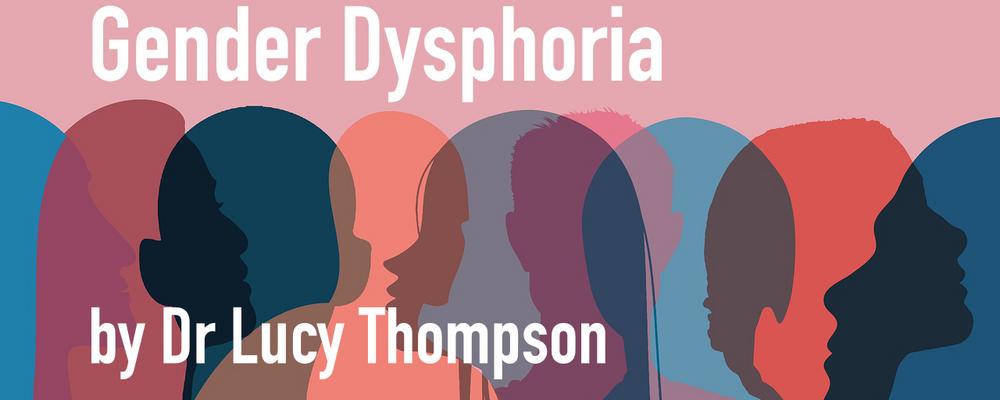
- Home
- Research
- Find research
- Exploring Gender Dysphoria: Insights from Dr. Lucy Thompson's Research Findings
Exploring Gender Dysphoria: Insights from Dr. Lucy Thompson's Research Findings
Dr. Lucy Thompson elucidates the diagnosis Gender Dysphoria (GD), offering a comprehensive overview and summarising the pivotal findings from her extensive research.

Lucy Thompson is a research psychologist based in the North of Scotland, working as a Senior Research Fellow in the University of Aberdeen Institute of Applied Health Sciences. She have been a member of the GNC since its inception in 2011. Lucy completed a degree in Social Sciences (honours in Psychology) in 1996 and went straight on to study for her PhD in Psychology. This and the Master of Public Health degree she attained in 2009 have provided the ideal foundation to develop her research interests in early child development, neurodevelopmental conditions, and parenting support.
Here, Anna Spyrou meets up with Lucy to discuss her important research on Gender Dsyphoria, which focuses on epidemiology, mental health and treatment.

What are your main research areas?
— My publications include research on whole population screening for neurodevelopmental problems, evaluation of parenting support interventions, use of whole population datasets and data linkage to answer epidemiological questions, and systematic literature reviews (in a range of topics). My research work is driven by a passion for ensuring that all children and families get access to the right services for recognising, understanding, and supporting mental wellbeing and functional difficulties associated with developmental conditions.
I understand you have been conducting important research on gender dysphoria for the past few years. Please can you explain what we mean by gender dysphoria? Are there any known causes?
— Gender Dysphoria (GD) is a diagnosable mental health condition where an individual feels ‘a marked incongruence between one’s experienced/expressed gender and natal gender’ which is associated with ‘clinically significant distress or impairment in social, occupational, or other important areas of functioning’ (quotes taken from the Diagnostic and Statistical Manual for Mental Disorders – DSM – criteria). There is no single cause – the development of gender identity is complex and influenced by both biological and environmental factors. It is completely separate from sexual orientation.
The fact that increases are being seen in teenagers and significantly more in teenage (natal) girls is of concern
Where does gender dysphoria fit into the ESSENCE concept?
— GD fits into the ESSENCE concept as there is evidence that there is a higher prevalence of GD among those who have a neurodevelopmental condition; the association with autism spectrum conditions being the most investigated. The overlap between these conditions is small – only a small percentage of those with autism have GD and only a small percentage of those with GD have autism – but the higher prevalence is important and shouldn’t be ignored. We definitely need more good quality epidemiological research to understand the extent and nature of the association.
What are the most burning issues when it comes to gender dysphoria?
— At the moment, there is significant concern about the almost exponential increase in young people presenting in clinical environments with GD. There are a range of reasons why this increase may have occurred, including the increased availability of services and reduction in stigma. The fact that increases are being seen in teenagers and significantly more in teenage (natal) girls is of concern. Whilst there are well-established treatment protocols for adults with GD, the implications of hormonal and surgical treatment in adolescents are considerable and treatment protocols have a less stable evidence base.

Paper 1 A PRISMA systematic review of adolescent gender dysphoria literature: 1) Epidemiology. What was this about?
— We wanted to know simply what the pattern of presentation for GD in adolescents was – what was the natal sex and age distribution at onset, referral, and assessment. We were keen to ensure we only included research that was based on clinically-identified GD – there is a large amount of community survey data available and a lot of social media discussion of the issue, and we wanted to be clear about whether / how these questions could be addressed by good quality scientific evidence.
What were the main findings?
— The literature showed that there has been a significant increase in adolescents presenting with GD, and that natal females outnumber natal males by a ratio of almost 2:1 (63% female: 37% male), and that this is a change in recent years. We also showed that the mean age of referral was 13 years, and the mean age of assessment was 15 years. It should be noted that these findings were based on a relatively small number of papers mostly from the same internationally-leading treatment centres, and there was a risk of sample overlap. There are not enough published data available to answer all the questions we had, including prevalence rate and average age of onset.
Paper 2 A PRISMA systematic review of adolescent gender dysphoria literature: 2) mental health. What was this about?
— For this paper, we wanted to characterise the research evidence regarding the co-occurrence of GD and mental health conditions. We were aware of some association between GD and autism, depression, and anxiety, but as with paper 1, we wanted to be clear on the available evidence from across the peer-reviewed research literature.
What were the main findings?
— Adolescents presenting for GD intervention experience a high rate of mental health problems, including anxiety and depression, and neurodevelopmental conditions. Although many participants showed a psychiatric / mental health concern history prior to GD referral, only one paper was able to show that previous mental health problems preceded GD. Study findings were diverse, however, both in their measures and approach, making it hard to make clear conclusions about the full nature and extent of mental health problems. There was also, as with Paper 1, a large overlap between samples studied, and most of the papers emanated from the same three international treatment centres.
Paper 3 A PRISMA systematic review of adolescent gender dysphoria literature: 3) treatment. What was this about?
— In this paper we asked what the existing research literature could tell us about the type of treatment adolescents were being offered for GD, at what age, and what outcomes were known.
What were the main findings?
— We found that adolescents presenting for GD intervention were usually offered puberty suppression (to prevent the development of secondary sexual characteristics, stage 1) or cross-sex hormones (to promote the development of secondary sexual characteristics of the identified gender, stage 2), but rarely surgical intervention (to surgically alter secondary sexual characteristics to appear more as the identified gender). Where surgery had taken place, it was primarily mastectomy. Participants among the samples we reviewed received puberty suppression at a mean age of 14.5 years, and cross sex hormones at a mean age of 16.2 years. There were no long-term outcome data for this age group, although we were able to report some evidence of improved global functioning and depressive symptoms with treatment. Some side effects were noted, but none were considered harmful, with the possible exception of the impact of puberty suppression on bone density (where there were mixed results, worthy of further investigation). As with the previous two papers, there were limitations in the nature of the sample of papers reviewed which makes it difficult to reach firm conclusions.
— This body of work confirms in systematic terms that there is a lack of good quality, whole-population based research evidence regarding the epidemiology of gender dysphoria, the comorbidity with mental health conditions, and the nature and impact of intervention in adolescence. Ultimately, clinicians are left ill-equipped to make safe and appropriate decisions. There is work ongoing in the UK in the form of the Cass review, the preliminary report from which prompted the ceasing of all interventions at the Tavistock clinic in London. This review should lead to the development of a strong research agenda, and more robust guidelines, to assist clinicians going forward.
— It is important to note the strong sociocultural influences on this field of investigation. In other cultures globally there has been, for many centuries, an acceptance of gender fluidity, such as ‘Two Spirit’ people in the Americas, or Hijra in South Asia. In these contexts, the notion of binary gender is less important, and no doubt influences the freedom of individuals to express their gender identity without the need to irreversibly alter their physical form. There is scope for reflecting on how our (Western European) culture conceptualises gender identity more rigidly, and the potential impact on young people’s lived experience and their felt need to seek medical support.
What are you currently working on?
— I always seem to have a few different projects on the go. I am working with GNC colleagues to generate a new ‘super’ dataset regarding regressive autism and its associated characteristics and outcomes, combining samples of participants from a range of GNC studies (necessary as regressive autism occurs in a relatively small number of people). I am also finishing the write-up of a feasibility randomised controlled trial of a parenting support intervention for parents of school-aged children with ADHD, called Parents InC, where we were able to demonstrate that a large trial would be feasible, and that Parents InC may be a more economical option than some other, more intensive programmes. I am also working with colleagues in my local area and nationally in Scotland around the development of perinatal and infant mental health services. These are just some examples.
1. I am one of five children and I grew up in the northern isles of Scotland, on a similar latitude to Gothenburg
2. I love to sing and am currently a member of a ‘show tunes’ choir
3. I am an ESSENCE parent – my 8-year-old son has ADHD and DCD
4. I am currently training, and have recently begun practicing, as an ADHD Life Coach
5. I could have gone to art school but chose to study psychology instead.
